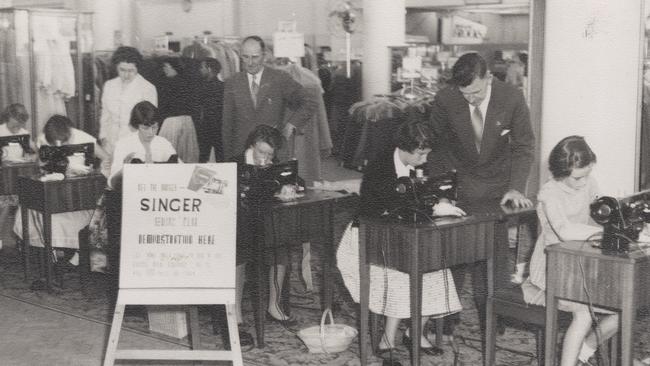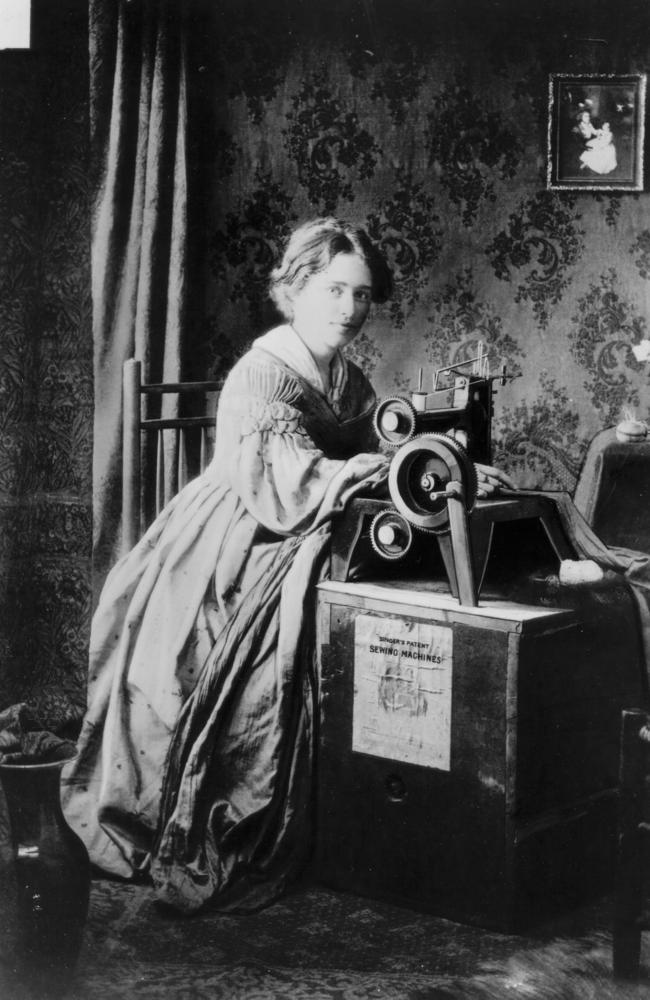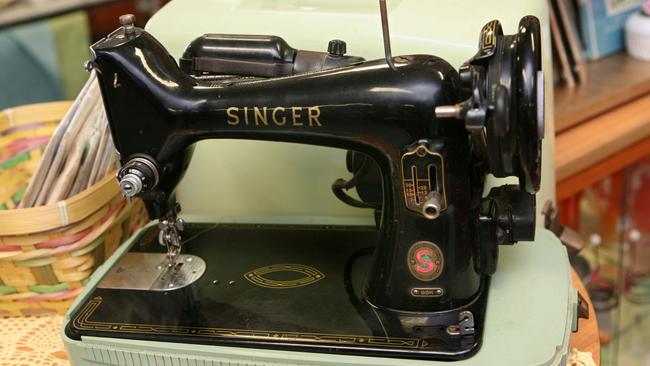Singer sewing machines were used in nearly every Australian house at one time
IF your parents didn’t use one, theirs probably did. Some people may still be using them — these sewing machines sold so well their inventor built one of the first skyscrapers in New York.
- The story of the SA-made Bluebird railcars
- The history of the mobile phone
- SA’s hidden cactus garden you’ve probably never heard of
- The life of a Boy Scout in the 1950s and 60s
MAHATMA Gandhi once counselled his followers to buy nothing made by the British, except a sewing machine.
He called the Singer sewing machine “one of the few useful things ever invented” because it was timesaving rather than time-wasting.
The Singer treadle sewing machine may just be one of the greatest innovations of all time. It has survived, virtually unchanged, for more than 150 years and even in today’s hi-tech world, continues to play an important role in some developing nations.
In my own childhood home there was always a Singer sewing machine humming away in the background. My mother was a gifted seamstress and would often tell us how she had trained as a “tailoress”, fashioning men’s suits for “Arnold’s, Tailors of Distinction” in Port Pirie.
She used those skills right throughout her life, making and mending clothes for her brood of four children and later, widowed at a relatively young age, to earn income and pay off a mortgage.
Each of my sisters learned to sew on the Singer. It was the accepted norm back then that the girls in the family were taught the skills that would help them in rearing their own children.
Just recently on the Adelaide Remember When Facebook page, readers shared their childhood memories of learning to sew on a Singer.

“My Mother had a Singer treadle sewing machine,” wrote Barbara Rowley. “She made nearly all my clothes when I was growing up.
“I remember going home once with a piece of material and asking Mum to make me a dress for a dance the following night. Sure enough when I got home from work, there it was, all finished.
“When I had my three girls she made their little nighties and matinee jackets, and, as they grew, she made their little dresses. Unbelievable how fast her legs could move the treadle up and down.”
More readers joined the conversation with their own recollections.
Sharon Armytage James recalled that her mother made many dresses for her on the sewing machine; “I remember beautiful dresses she made for my Oscar in ballroom dancing and the Latin American outfits. They were beautiful. I remember my ballroom dress was white with a gorgeous lace bodice and mum filled each flower of lace with a diamante, each one hand sewn into place. It was stunning, she was very clever.”

Celeste Burgess recorded: “My dear mother — who, I admit I took for granted — made her own patterns from customers or family measurements using photos they took from magazines. I would come home from work, 15 years old, on a Friday and announce: ‘Mum, I’ll need a dress to wear tomorrow night.’ She would take me shopping on Saturday morning, pay for the material I’d chosen, and spend all day making the style I’d chosen. This was a regular event. And sadly, I took it all for granted.”
And Morvyth Howard remembered how she learned to draft patterns in home science class in school; “Nobody in my family sewed, but I taught myself on the treadle sewing machine, as did my sister. Then I managed to make clothes for my boys using the Enid Gilchrist pattern books. It’s such a shame that it is cheaper to buy clothes today than to make them, because we have lost those skills.”

It is widely accepted that the Singer sewing machine revolutionised the way the world created and repaired its fabric. It transformed not only the textile industry, but became the world’s first truly global business.
Isaac Singer could hardly claim to have invented the sewing machine, but the one he patented in New York in 1851 was the most practical and the most commercially viable. Its success was proof of his adventurous spirit. He had worked as an actor, a ditch digger and a cabinet-maker before striking it rich in the sewing business.
Although millions of his sewing machines were sold worldwide, Singer himself it seemed cared less about the usefulness of his invention than about the riches it brought him “I don’t care a damn for the thing. The dimes are what I’m after,” he once said.
He was apparently more caring for his other creation, the world’s first time payment plan, which allowed his customers to pay in instalments for a machine that was far too expensive for most to afford in a lump sum.

His enormous wealth led him to build Singer Tower, the company’s central headquarters in Manhattan’s financial district from which it controlled and communicated with its sales agents around the world. It was one of the first corporate skyscrapers in the country and, for about a year, the tallest building in the world.
Although Isaac Singer may not have been in love with his invention, there are several global charitable organisations today still using it to bring hope and a brighter future for people in developing countries, including India and Africa.
As one of the charities says on their website; “Everybody needs clothes, which makes tailoring the journey of choice for many seeking a way out of poverty. Wherever you go in Africa, from busy city street corners to quiet rural backwaters, many with no dependable electricity supply, you will find a tailor with their sewing machine. The gift of a treadle sewing machine will allow a newly trained tailor to work from their own home or market place and use the proceeds to keep a roof over their family’s head, put food on the table and send their children to school.”
It’s impossible to estimate how many thousands of the Singer treadle sewing machines were originally sold or still remain in Australia. Most will have now been retired and moved into a dusty spare room, some kept as treasured family heirlooms or as decorative pieces while a small number, I’m sure, still remain in active service.
Although the Singer Corporation was completely taken over in a corporate raid in 1987 and the company broken up, the name still lives on with a range of consumer products, including electronic sewing machines. It is now part of the SVP Group which also owns the Pfaff and Husqvarna brands.
